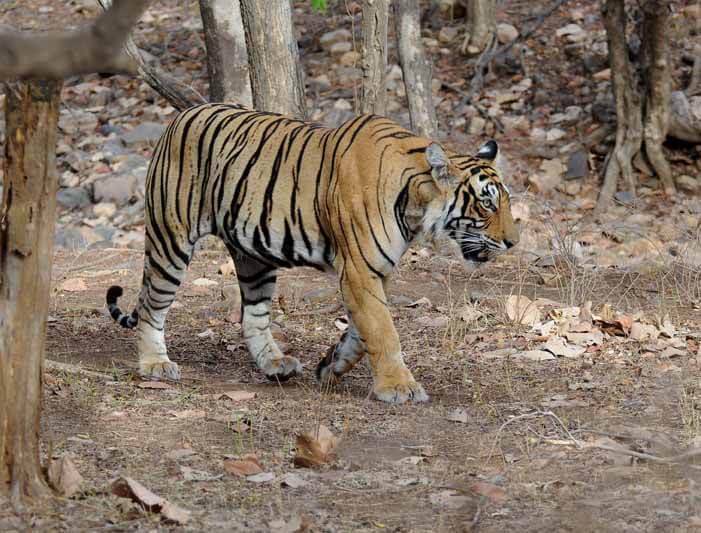The skin and bones of long-dead tigers during the British Raj in India have helped researchers from India and Britain reveal how the current threat to endangered species is their DNA

Researchers took DNA samples from the cadavers of sport-killed tigers and preserved embalmed at the Natural History Museum in London and the National Museum of Scotland, and compared them with DNA samples from tigers alive today. They found that the genetic diversity among the remaining Indian tigers may be low enough to prevent the population from surviving.
The Indian tiger population has plummeted from about 40,000 in 1850 to less than 2,000 today, as their numbers have dwindled so they now have less choice of mating partners. The findings brought a blow to the Indian government, which invests in conservation and believes that for several years the number of tigers has increased and the species has been saved from extinction.
The research, conducted by Samrat Mundol and Uma Ramakrishnan of the National Center for Biological Sciences in Bangalore and Prof. Michael Bruford of Cardiff University, was published in the Journal of the Royal Society of Britain last Thursday.
According to Buford "the results were amazing. We found 93% of the genetic variants in DNA that we found in historical tigers are not found in modern tigers. This is a much bigger fall than we expected."
For most mammal species, a population of more than 1,000 individuals is sustainable. But Buford explained that it is more appropriate to think of them not as a single population but as pockets of much smaller populations scattered sparsely across the subcontinent. The researchers divided tigers into two general genotypes, those living in the highlands of Nepal, Tibet and northern India, and those living in the lush lowlands of the south.
"Looking at modern tigers now, you would assume they are remnants of two main genotypes. But when we compared their genes with historical populations, we realized that this was not the case at all - the reason for the separation is that all the intermediate populations had already been destroyed," Bruford explained.
"Not only have tigers lost a huge amount of genetic variation since the days of the Raj, they are also partitioned. And can't disperse around their habitat like they normally would, so they lose their genetic viability as a population even faster."
Hunting by the British and Indians as well as by the Mughal princes along with the rapid loss of habitats for agricultural purposes and due to urbanization are to blame for the decrease in the number of tigers. This is in addition to the fact that the largest tigers were destroyed by game hunters and kept as trophies, which resulted in the removal of the DNA of precisely those who could have been the evolutionary winners from the genetic pool.
According to Buford, in the short term the threat posed by poachers is still more influential, but the decline in the quality of the tigers' genes is a long-term problem. "It won't be resolved until we allocate wild spaces that are consistently managed, with corridors that allow connecting habitats," he said. "When the Indian government measures its success, the discourse needs to rely on more than just numbers.

One response
Hello father
If they manage to transfer items between different and isolated groups on a regular basis,
This may increase genetic diversity ??